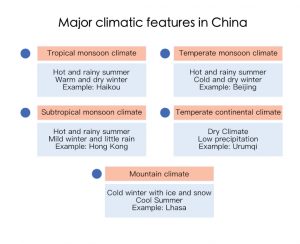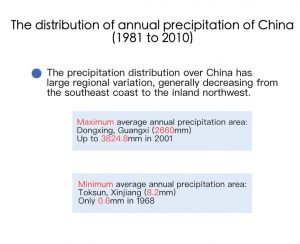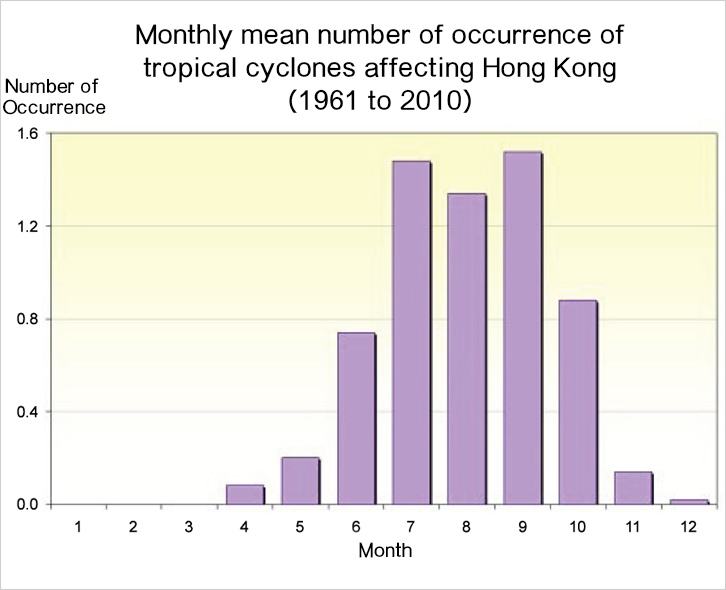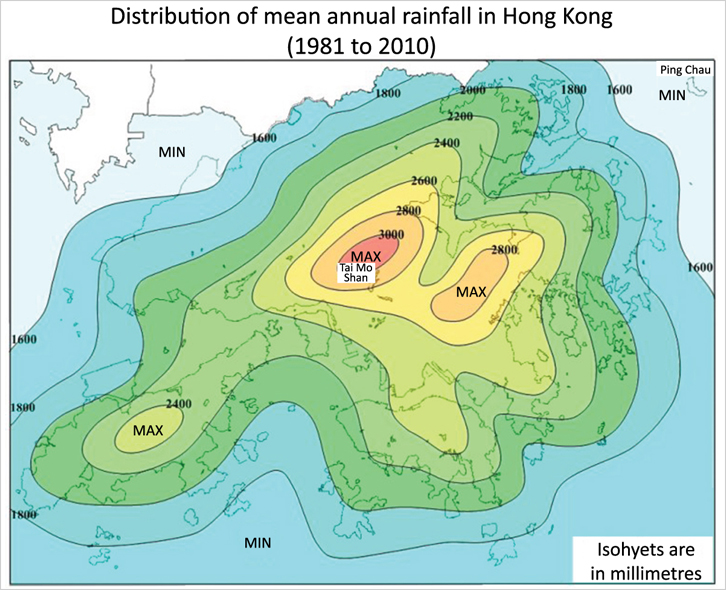How are the climates in China and Hong Kong?
Climate in China
Located in the southeast of the Eurasian continent, China is vast in size with complex terrain. It has the Pacific Ocean in the east and Qing Zang Gaoyuan in the west. The interactions among the ocean, continent and terrain give rise to typical monsoon climates. Fig 1.3 shows the major climatic features in China.
➤ What is monsoon?
Monsoon refers to the seasonal reversal of wind direction.
Reference:https://www.hko.gov.hk/education/edu01met/wxphe/ele_monsoon.htm
 |
|
| Fig 1.3 Major climatic features in China (Source: China Meteorological Administration) |
In winter, China is affected by the Asian high pressure system, with cold and dry prevailing northerly offshore winds. In summer, China is affected by the subtropical ridge of high pressure over the western North Pacific. The prevailing southerly airstreams generally bring warm, humid and rainy weather.
 |
|
| Fig 1.4 The distribution of annual precipitation in China (Source: China Meteorological Administration) |
★ More information
What are the major climatic features in China?
www.cma.gov.cn/2011xzt/2012zhuant/20120302/2012030205/201203020501/201203/t20120306_163740.html
Climate in Hong Kong
Hong Kong’s climate is sub-tropical, tending towards temperate for nearly half the year. During November and December there are pleasant breezes, plenty of sunshine and comfortable temperatures. Many people regard these as the best months of the year. January and February are cloudier, with occasional cold fronts followed by dry northerly winds. It is not uncommon for temperatures to drop below 10°C in urban areas. March and April are milder although there are occasional spells of high humidity, with fog and drizzle bringing about low visibilities. May to August are hot and humid with occasional showers and thunderstorms, particularly common during the mornings. There is usually a fine dry spell in July which may possibly last for one to two weeks, or even longer in some years. July and September are the months during which Hong Kong is most likely to be affected by tropical cyclones, although tropical cyclones are not unusual at any time between May and November.
The mean annual rainfall ranges from about 1,400mm at Ping Chau to more than 3,000mm in the vicinity of Tai Mo Shan. About 80% of the rain falls between May and September.
★ More information
Climate in Hong Kong
https://www.hko.gov.hk/cis/climahk_e.htm
Monthly Weather Summary
https://www.hko.gov.hk/wxinfo/pastwx/mws/mws.htm
Climate Statistics
https://www.hko.gov.hk/cis/climateStatistics_e.htm



